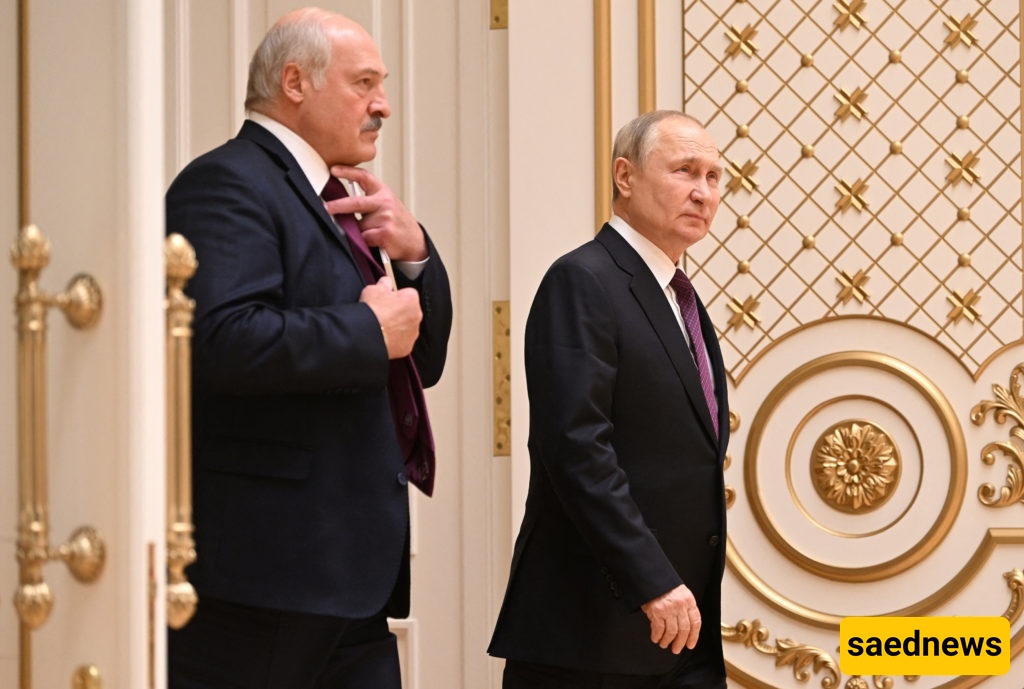SAEDNEWS: It has been announced that Russia’s advanced hypersonic missile has entered its operational phase and will soon be deployed in Belarus. The decision has drawn immediate reactions from NATO and military analysts, who see it as a sign of rising tensions in Eastern Europe and a new step in the ongoing arms race between Russia and the West.

According to Saeed News, citing CNN, as the war in Ukraine enters a protracted and complex phase, Vladimir Putin has once again challenged the region’s military balance by announcing the operational deployment of Russia’s hypersonic missiles in Belarus. This move is not only significant from a military technology perspective, but also sends a clear message to NATO and its Western allies: Russia does not intend to retreat.
Hypersonic missiles, which travel at speeds exceeding Mach 5, are difficult to intercept due to their high velocity and maneuverability. Russia is among the few countries to have successfully developed this technology and now claims it has formally entered military service.
In his speech, Putin stated:
"Today, we not only possess a highly advanced weapon, but have also brought it into active service. Its deployment in Belarus is a strategic step to enhance the security of the Russia-Belarus Union."
The deployment of these missiles in Belarus — a country bordering NATO members Poland and Lithuania — carries particular significance. Belarus has become a logistical base for Russia during the Ukraine war and, with the stationing of these weapons, is now effectively on the front line of direct threats to the West.
Some analysts believe Putin’s move aims to:
Increase psychological pressure on NATO
Strengthen deterrence against the shipment of heavy weaponry to Ukraine
Demonstrate Russia’s strategic capabilities in the face of sanctions and international isolation
In response to the announcement, a NATO spokesperson said:
"The deployment of advanced Russian weapons on Belarusian soil is a provocative act that threatens European security. We are monitoring the situation closely and with utmost seriousness."
Meanwhile, Belarus’s neighboring countries, including Poland and Lithuania, have warned that they will respond to the threat by reinforcing their military presence.
Both Russian and Western analysts believe that Putin’s move is not solely military in nature. As Russia grapples with economic challenges, domestic unrest, and dissatisfaction over the course of the war in Ukraine, Putin appears to be using a display of military strength to influence both foreign allies and domestic public opinion.
The move may also be interpreted as a response to recent security pacts signed between the West and Ukraine or between Sweden and Finland—particularly in light of Sweden’s NATO membership and the expanding military presence of the West in the Baltic region.
The hypersonic missile referenced by Putin is likely the “Kinzhal” or “Zircon” system. These missiles are capable of reaching speeds between Mach 6 and Mach 10 and can strike targets at long ranges, even when confronted with advanced defense systems such as Patriot batteries or European missile shields.
The United States and China are also developing such weapons, but Russia claims to be the first country to have operationally deployed them. Some Western sources have questioned this claim, but Russia’s use of the Kinzhal missile in attacks on Ukraine last year demonstrated that this technology has at least been deployed in real battlefield conditions.
The deployment of hypersonic weapons in Belarus is not only a threat to NATO, but also sends signals to other global players:
China and Iran may interpret this move as evidence of the West’s inability to exert effective pressure.
Ukraine now faces a new threat that is significantly harder to defend against.
Germany and France, both seeking de-escalation, are confronted with an increasingly complex situation.
Russia’s latest move marks another step toward strategic escalation with the West. By positioning hypersonic missiles in Belarus, the geographical boundaries of threat are pushed closer to the heart of Europe, pushing the arms race into a new phase.
As NATO moves to strengthen its defensive posture, one critical question remains: is Russia truly seeking deterrence, or has it initiated a dangerous game that could lead to more direct confrontation?
The answers to these questions depend on how other actors respond—and on the strength of international diplomacy in the months ahead.

